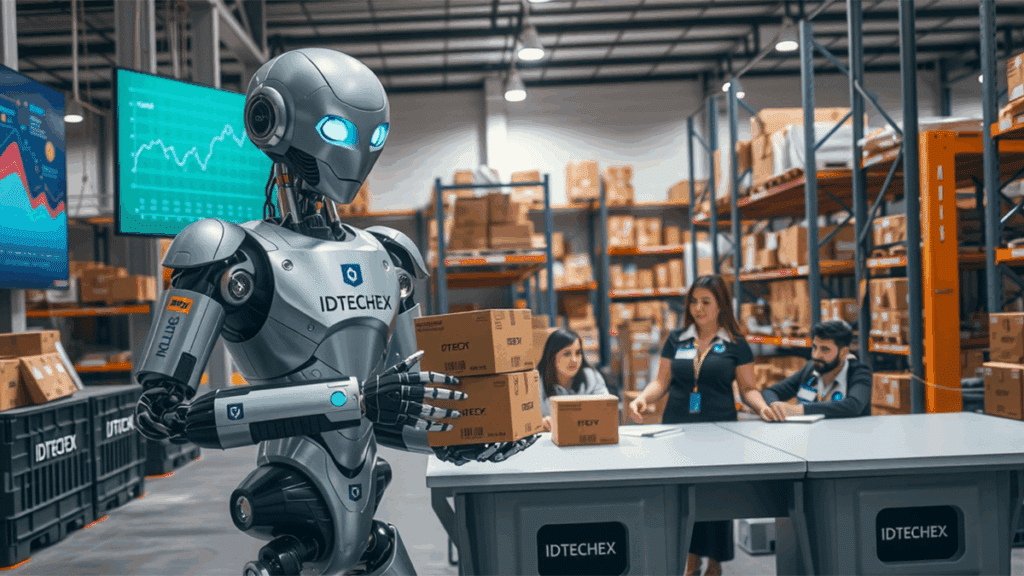The recent acting up of a humanoid robot that took place in China highlights the space for further development within this technology sector. IDTechEx‘s “Humanoid Robots 2025-2035: Technologies, Markets and Opportunities” report explores the growing need for strict regulation, alongside developments creating the potential for success behind this promising technology.
Showcased by the surprise of surrounding workers, the unexpected actions of a humanoid robot in China demonstrates that this robotics application is still operating in early stages. However, despite being an immature technology, there is still much scope for success for humanoids.
Scope for successful integration
The automotive industry is widely considered to be the leading industry for humanoid robots. However, they are still in the early stages within this sector, where they are instructed to perform very simple tasks, such as badge labeling, material handling, and inspection. IDTechEx predicts that by 2027 to 2028, the humanoids will work in more specific application scenarios within automotives, slowly moving towards more complex tasks by 2033. Warehousing and logistics are predicted to be the second-largest applications for humanoid robots.
The integration of humanoid robots will require complex system maintenance, and as IDTechEx outlines, will be a dramatic change in programming and operation. Additionally, maintaining and programming the advanced systems behind humanoid robots to a sufficient standard will be another challenge, though it can be overcome with proper training.
Workforces will need to learn the necessary skills, which may come with both time and financial costs; however, as training programs become available, this barrier is expected to become less problematic. Opportunities will arise for workplaces to flourish in collaboration with the combined skillsets of both robots and humans, which training programs will make possible.
Regulation needs to catch up
Liability is a big question arising from the integration of humanoid robots, as demonstrated by the recent example in China of a robot seemingly acting of its own accord. With many parties involved, from the manufacturer, employer, and software developer, IDTechEx states that the EU’s Machinery Directive has not clearly outlined liability for robots and systems with human-like capabilities. As a result, the willingness of companies to adopt humanoid robots is limited due to the uncertainty surrounding potential litigation costs, while insurance may be hard to acquire without defined risk models.
Data privacy can be another risk associated with the employment of humanoid robots, as they rely on sensors, such as LiDAR and cameras, and AI to gauge the ambient environment, as well as movement and speech data from surrounding workers, in order to operate. While many data privacy regulations are already in place, such as GDPR in Europe and CCPA in California, these are not specifically tailored to robots processing real-time data in a shared workspace. The debate around the intrusiveness of humanoid robots could therefore add additional barriers.
Due to the current challenges surrounding the adoption of humanoid robots, it is likely that they will initially remain within industrial settings in a controlled environment before being deployed more widely. Extensive testing and proof of safety will need to be acquired first, according to IDTechEx, before they can be integrated into society.
 A depiction of regulatory and commercial challenges surrounding the development of humanoid robots.
A depiction of regulatory and commercial challenges surrounding the development of humanoid robots.
It is hoped that, over time, as humanoid integration becomes more common and subsequently more seamless, challenges are expected to improve, with new career opportunities potentially arising as a result.
For more information on this topic, please see IDTechEx’s report, “Humanoid Robots 2025-2035: Technologies, Markets and Opportunities“. Downloadable sample pages are available.
For the full portfolio of robotics market research available from IDTechEx, please visit www.IDTechEx.com/Research/Robotics.
About IDTechEx
IDTechEx provides trusted independent research on emerging technologies and their markets. Since 1999, we have been helping our clients to understand new technologies, their supply chains, market requirements, opportunities and forecasts. For more information, contact [email protected] or visit www.IDTechEx.com.


